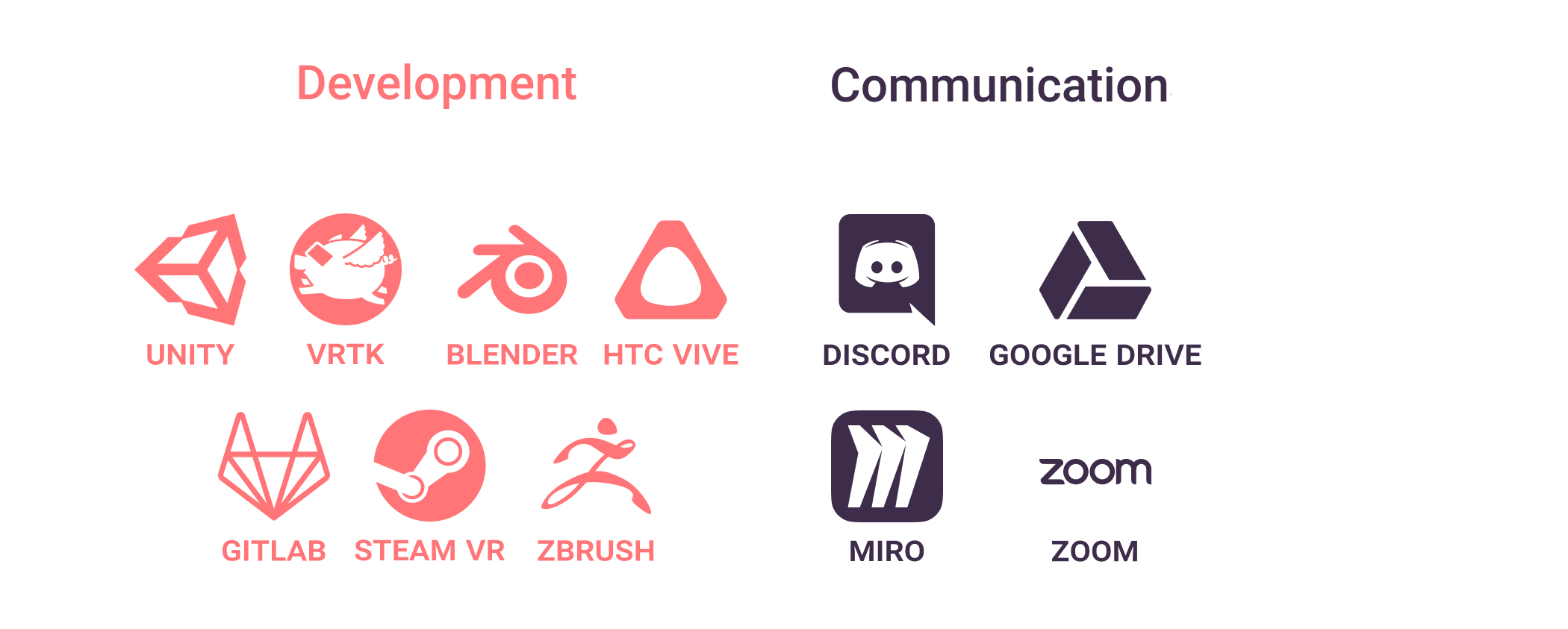Regarding this point we mostly stayed true to last semester’s solutions.
Development
The technological foundation we continued working on is realized with the Unity (2019.4.12f1) game engine, expanded by the SteamVR (1.2.3) and the Virtual Reality Toolkit (3.3.0) plugins. For project setup and code versioning we used the same approved GitLab self-hosted solution as last semester.
In terms of the targeted hardware: there were internal discussions at the beginning of the semester about porting the application to a standalone, inside-out-tracking based platform like the Oculus Quest 2. However, from a discussion of the costs and benefits of this, we decided against the uncertainties and possibly volatile timeline it would ensue and instead focussed on enhancing the content of the experience. For this reason, our experience is currently still developed and targeted for the HTC Vive VR headset.
The modeling aspects of the work were again realized in Blender (2.91), with an additional use of ZBrush for sculpting and texturing the user avatars.
Communication
The main internal communication channel remained Discord, while weekly catch up meetings with the project supervisors were held via Zoom.
Miro boards and Google Drive were further used for clustering and visualizing user test results as well as general organizational containers.
